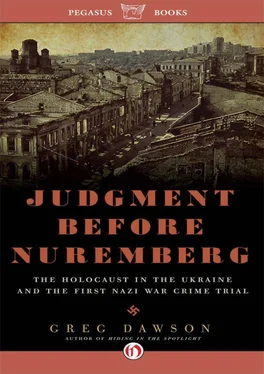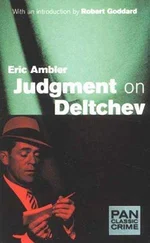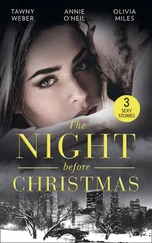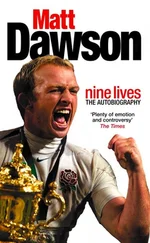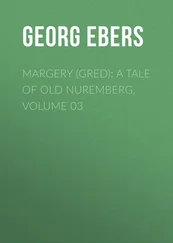“Ah! Da-da,” he said, and then pulled out his arsenal of English. “Seven kilometers.”
I had assumed the old ghetto site was closed off because it is sacred/profane ground. That was overly sentimental on my part. In fact, the security fence surrounds a building site, or would-be building site. Mounted at the top of the fence is a colorful conceptual drawing of a high-rise residential development that’s never gotten off the ground. Jewish leaders in Kharkov, including the Chief Rabbi, have vigorously protested the project, noting the presence of memorials marking the ghetto as a way station to Drobitsky Yar. Nevertheless, the fate of this sacred real estate remains an issue in post-Soviet Ukraine, where “private” and “profit” are no longer heretical notions.
Just outside the fence are two monuments side by side. “The Wall of Sorrow” is a flat, brick-colored slab, about ten feet high and eight feet long, with square and rectangular cutouts. Flowers had spilled out these openings when I last visited on that balmy September day in 2006. On this December day they were just stark holes in a wall, windows in a prison. A plaque on the memorial, erected fifty-one years after the fact in 1992, says, “In 1941 there was a Jewish ghetto here. Its prisoners were executed in Drobitsky Yar.” To the left of the wall on the ground is a boulder with a plaque reading, “To Rescuers—Righteous Gentiles. Grateful Jews of Kharkov.”
My mother was an insatiable—her parents would say incorrigible—explorer as a young child, pushing through doors and boundaries in her hometown of Berdyansk on the Sea of Azov in southeastern Ukraine. Maybe it was an inherited instinct to breach barriers, married to the moment, but I was seized by a need to go over the fence and stand on that ground, to see and feel what was there. But it was too high and slick to climb, and I found no place where I could squeeze through. Still unsatisfied, I am left with a snapshot of trees and a snowy field taken through a narrow opening where two sides of the fence meet.
I pressed on toward Drobitsky Yar, dodging piles of dirty snow on the roadside, too close to the passing traffic for comfort. I was relieved to encounter a footpath running parallel to the highway a few feet below the pavement. It was packed with snow and lined by tall trees. The 9 A.M. sun was a pale silver circle cold as a full moon over the fields. The deserted footpath stretched out before me. I opened my cell phone and found a text message from my wife Candy in Orlando where it was just after 2 A.M. “Thinking of you, walking with you every step of the way. Be safe and know I love you.”
The footpath ended and I was back on the main road. I passed a gas station, a man selling oranges out of his trunk, and a jumble of shops that we would call a strip mall in the U.S., except these were ramshackle and more jammed together. I saw two women standing outside a flower shop smoking, watching—and I realized it was in this stretch, in the final kilometers before Drobitsky Yar, that my mother bolted out of line and became one of the gray women on the side of the road. And somewhere near here, the escapee was taken in and given shelter for the night by Ukrainians, who risked their lives by harboring a Jew, before continuing her perilous journey back to Kharkov.
We exchanged glances, and one of the women shouted something in Russian I didn’t understand. “Amerikanski!” I said, shrugging my shoulders and turning my palms up. They smiled broadly and waved for me to come inside. “Nyet, spasiba (no thank you)!” I shouted, and marched on.
Another canopied footpath led me along more open fields and then back to the road and a bridge over train tracks. The traffic was accelerating. The highway began to diverge, with exits to other places. None led to Poltava.
When he saw the trucks go north, my father knew they were going to kill us because there was nothing to the north. It was the road to nowhere.
Over the next hill, on the left, I spotted a bus shelter. It looked freshly painted in robin-egg blue and brilliant red blooms on the back wall. A sign across the roofline announced the name of this stop. It was in Russian, but I could read it: Drobitsky Yar.
A few hundred yards beyond the shelter away from the highway was the outline of a menorah. At the base of the menorah is a plaque that says, “This is the place where the dead teach the living ones.” This was my stop.
As I was preparing for this visit to Ukraine, I came across The Time of the Assassins, a novel by Godfrey Blunden, an Australian journalist who covered World War II from the Battle of Britain to the battles for Stalingrad and Kharkov. Published in 1952, Assassins is about the alliances, betrayals, and butcheries of Nazi-occupied Kharkov. Like Inglourious Basterds and Life Is Beautiful , Assassins is fiction that pays tribute to fact by giving it life in our imaginations.
Near the end of the novel, a Russian collaborator, Dr. Karandash, visits a place outside Kharkov clearly modeled on Drobitsky Yar. One winter day, an SS officer named Müller takes him to a “tractor factory” and then “a small ravine some distance from the factory… to see the work that was being done.” Karandash likens the frozen ravine to an oil barge—“It began in shape like the bow of a ship”—with a deck stretching hundreds of yards. “And down the middle of the deck, so to speak, there was this path, like the catwalk on a big tanker…. What we were walking on, even though its even white cover made it look like a huge tarpaulin-covered deck, was in actual fact ice.”
Karandash and Müller step off the catwalk onto the ice, which cracks and opens up under them. They go tumbling like two Alices down a rabbit hole—“sliding, grappling at the side of the crevasse, plunging finally in a metallic shower of ice to the bottom of the abyss”—which deposits them not in a Wonderland but a chamber of horrors.
“We had fallen into one of their disposal pits. The ravine was full of bodies. How many? How can I guess? What does it matter? Does a mathematical symbol have reality? I have heard since that there are fifty thousand bodies there. It is not improbable. Below the snow-covered decks of that huge tank-barge there was a cargo of dead… legs and arms and bodies interlocked like the links of a sheet of chain mail, the snow sifting through the chinks of the mass, thawing and then freezing hard, joining it all into one flesh as hard as iron and as brittle as glass…. We saw bodies all around us, some ruddy, wax-like… others white as marble… tall and short, old and young, people of all cultures, men, women, and children. At our feet at the bottom of the crevasse there was the head of an old man. In our fall, one of us had fallen on the old man’s head and under the sudden weight it had snapped off, as clean as a carrot, and as raw, and now it rested at our feet, staring up at us through frosty spectacles.”
The image pulsed in my mind’s eye as I turned off the Kharkov-Rostov road and began the long walk from the highway and bus stop past the black menorah down a winding road to the ravine. At first glance from this distance the snow-covered ravine is just one benign element of a pastoral landscape, a Ukrainian Currier & Ives idyll. Then on the horizon the eye catches the shape of a flame, the pale stone beacon of the Drobitsky Yar memorial, shattering the momentary illusion. My first trip down this road four years earlier was in a car on a beautiful fall day when green and gold foliage obscured what lay beyond. Now, as I walked by, the denuded winter landscape exposed the telltale topography of ravines—deep gashes in the Earth’s flesh. They were so much steeper and deeper than I had recalled. Dr. Karandash’s voice suddenly intruded.
Читать дальше
